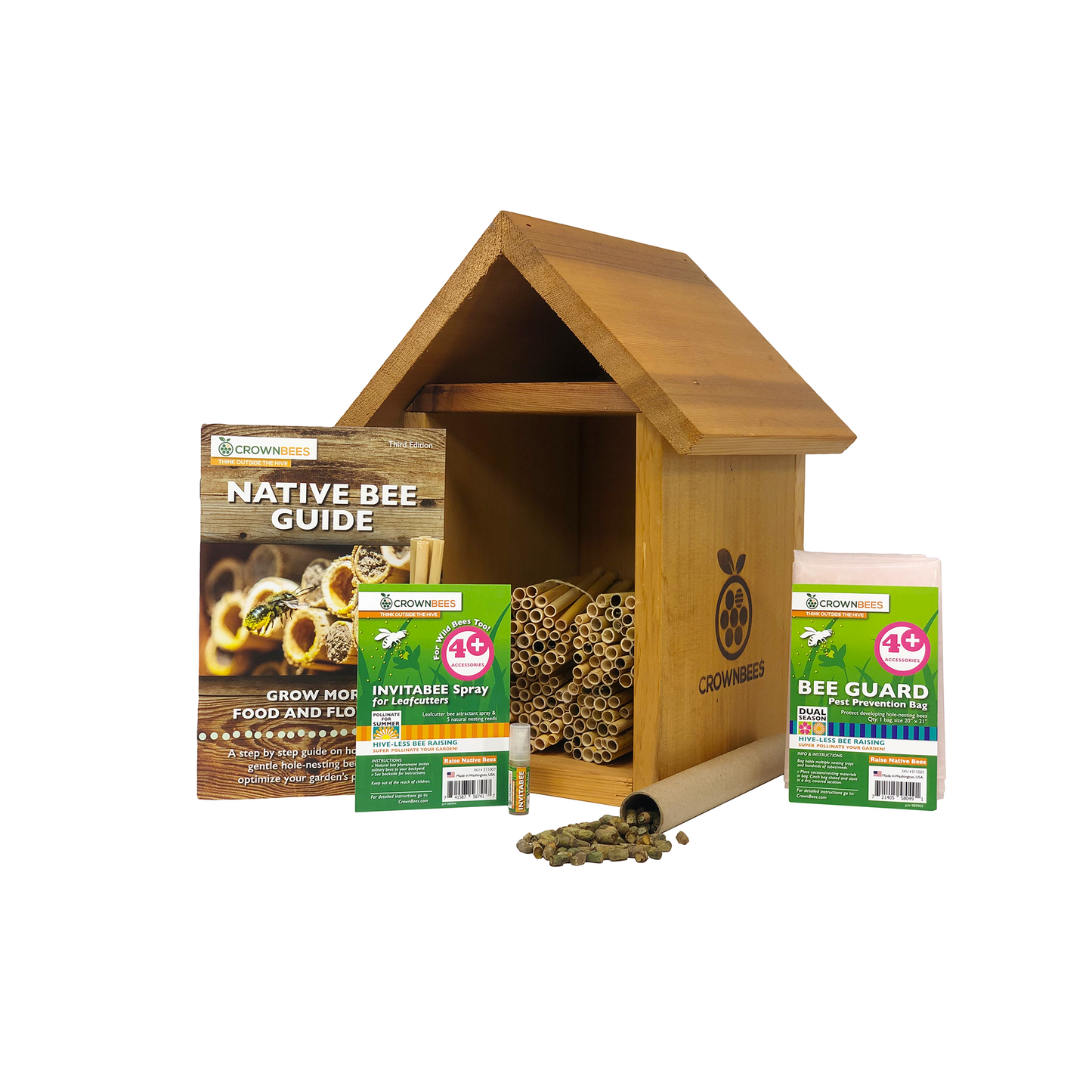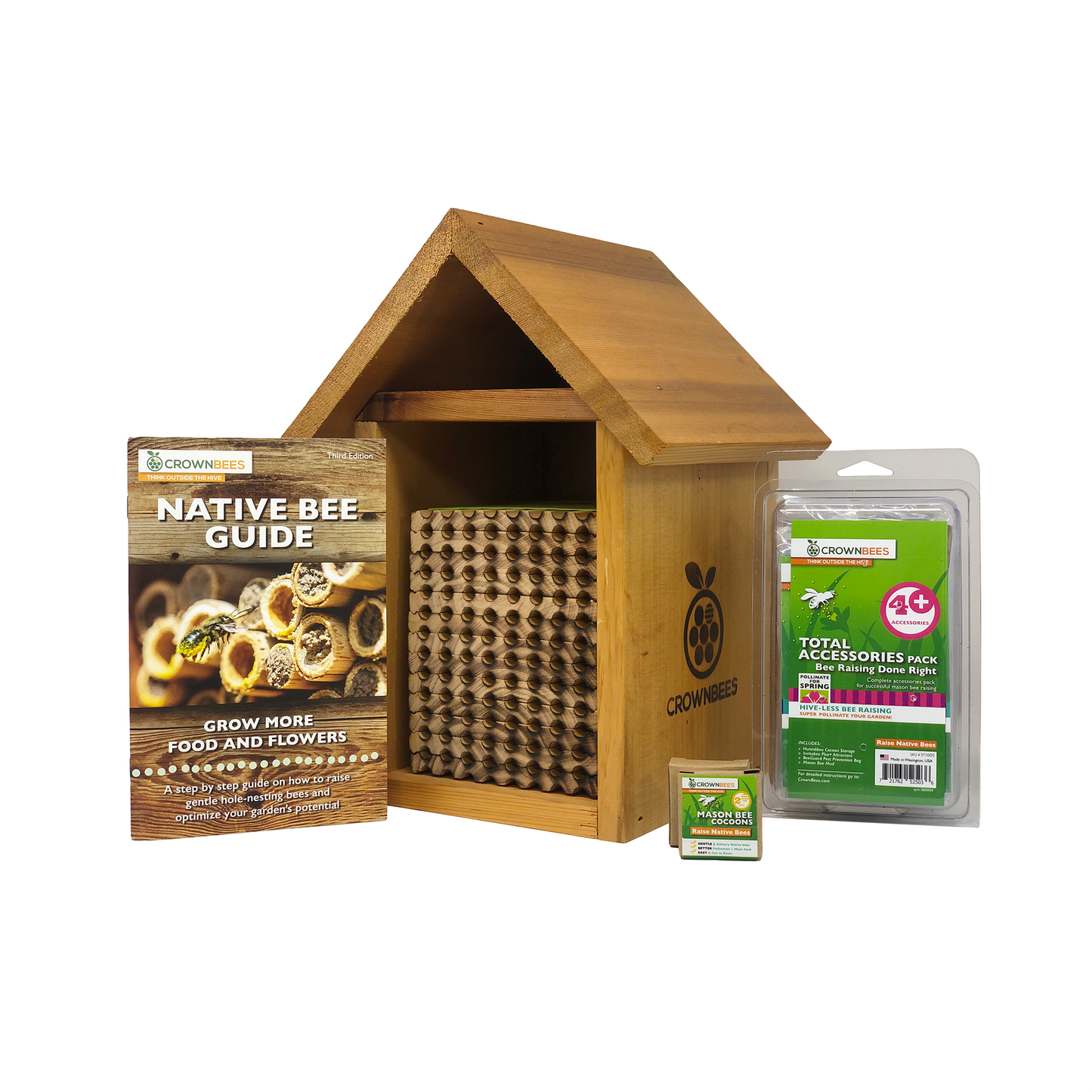
We take great pride in providing you with healthy leafcutter bees to give both you and the bees the best chance for success!
Why leafcutter bees?
Leafcutter bees have certain advantages over other managed bee species, such as:
- The non-aggressive behavior of leafcutter bees makes them safe around kids and pets! Leafcutter bees are solitary, meaning they do not have a single queen, do not live in a colony, and do not produce honey. Without the need to defend a hive, leafcutter bees are gentle and rarely sting. If you get stung, it's much less painful than a sting from a social bee - people stung by solitary bees liken the pain to that of a mosquito. As a result, solitary bees raisers do not need any special protective equipment!
- The foraging behavior of leafcutter bees makes them super pollinators. Honey bees gently land on blossoms and collect pollen on their bodies and store it in saddlebags on their hind legs. This method doesn’t allow for effective pollination. leafcutter bees, on the other hand, belly-flop onto flowers spreading pollen everywhere. The pollen sticks all over their bodies like Velcro and is more likely to fall off on other flowers, aiding in pollination.
- Leafcutter bees have a unique advantage over honey bees in their ability to pollinate complex flowers. Many legumes consist of one large central petal, two side petals, and fused bottom petals called a keel. These intricate flowers are more difficult to open. The keel petals enclose the stamen column under tension. When these petals are slightly separated by a bee searching for pollen, the pressure is released or "tripped." Pollination cannot occur unless the keel is tripped.
When tripped, bees are often struck on the head by the stamen column with a great deal of force and dusted with pollen in the process. Honey bees often seek out more accessible food sources. Leafcutter bees are well adapted to these unusual flowers and are not deterred.
Fun Fact: Leafcutter bees pollinate around 95% of the flowers they visit, whereas honey bees generally only pollinate about 5% of the flowers they visit.
What leafcutter bee species do we work with?
Currently, the only species of leafcutter bee we work with is the alfalfa leafcutter bee.
The alfalfa leafcutter bee (ALCB) was introduced into North America from Eurasia in the late '30s. The ALCB is now naturalized across North America and is the perfect pollinator for summer blooms. Don't let the name fool you; alfalfa leafcutter bees are generalists that visit many different types of flowers.

Where do we source our leafcutter bees from?
The alfalfa leafcutter bee is the second oldest managed species in the US. It was intentionally brought to North America from Eurasia in the late '30s. By the early '60s, the leafcutter's value as a pollinator was well recognized. As managed populations increased, however, so did new parasites and diseases. In particular, the fungal infection chalkbrood (Ascosphaer aaggregata). Unfortunately, the production practices of US beekeepers failed to adapt to these challenges, and as a consequence, the US leafcutter industry collapsed in the '80s.
Meanwhile, Canadian producers pioneered new management practices which have allowed alfalfa leafcutter bees to continue to be used for their pollination services in the US. Leafcutter bees raised in Canada are primarily free of chalkbrood disease, which is crucial for sustaining healthy populations of leafcutter bees for alfalfa, canola, carrots, melons, and other summer fruit and vegetable crops.
We source our alfalfa leafcutter cocoons from Saskatchewan, Canada, to reduce the incidences of parasites and diseases.



